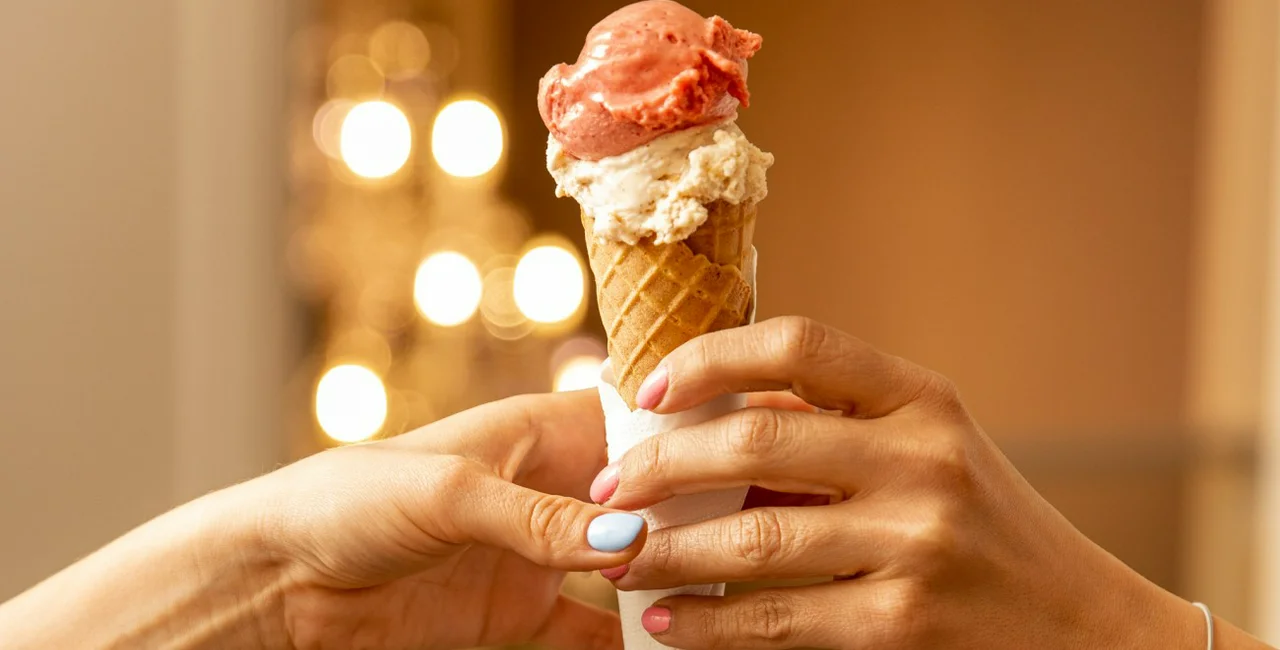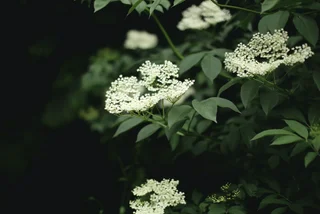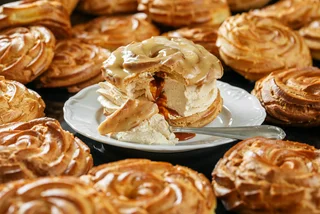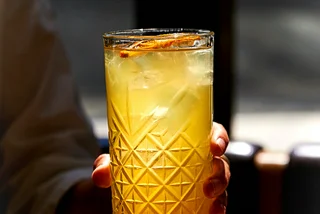On a quest to craft a vanilla ice cream of unparalleled perfection, Prague sweet shop Myšák ventured into the realm of ice cream production last year. The journey took head Pastry Chef Lukáš Pohl on a hunt for know-how from Brno, and ingredients from Sicily and Madagascar.
Pohl talked about the challenges of ice cream making and whether or not it's possible to create a deluxe scoop at home. He also offered us tips on how to spot quality ice cream and shared the latest for this summer's ice cream offerings at Myšák.
When did Myšák decide to get into the ice cream game?
We wanted to make it right from the beginning, but there was always something going on, so there was no room for such experiments. We used to get ice cream from Crème de la Crème, then our general manager Tomáš Hánek started going to Brno, where he met Jakub Gavor, the founder of the local ice cream parlor Ještě Jednu. We really liked their artisan ice cream, so we started taking it to Myšák. It was great, but going to Brno for it was not ideal.
How did you manage to figure it out?
Last Christmas we bought an ice cream machine for Myšák. We first used it to make eggnog and then, of course, we had to make ice cream. I thought of asking Gavor if we could do a swap, and everything worked out! He took me to his ice cream shop, showed me how production works, and taught me what good ice cream is all about.
At Ještě Jednu, they often prepare original flavors using confectionery products; they bake their own Moravian cakes or perhaps pinwheels and then add them to the ice cream. In return, I helped Gavor when he needed to clarify something about confectionery, but he mainly helped me. Thanks to this valuable experience, we have had our own ice cream in Myšák now for a year.
Did it go smoothly from the start?
Making ice cream was hard science for me at first. The most difficult thing was to understand the formulas for calculating the right ratio of ingredients because that's what ice cream making is all about. Let's take sugar as an example: usually, up to three types are added to the base (sucrose, dextrose, and glucose), each with specific properties. If you decrease any of those by 1 percent, the ice cream will over-freeze, instead of being creamy or runny. The ratio of dry matter, water, and fat is also important.
How did Myšák’s ice cream change in a year?
We have continuously fine-tuned it and it improved a lot. Today, we also supply a number of Ambiente businesses with ice cream: Café Savoy, Kuchyň na Hradě, Pastacaffé, Pasta Fresca, or Brasileiro U Zelené žáby. We produce up to 70 kilograms of ice cream a week in a single machine. We call it Fanouš after František Myšák, a pioneer of modern confectionery production and the founder of our confectionery. Like him, it runs from morning until night.
What needs to happen before the ice cream gets into the cone?
The key is choosing the best ingredients; they can be simple but of the highest quality. And that's only achieved by constant tasting and testing. When it comes to vanilla, for example, we found a source straight from Madagascar. We get it from the e-shop 1829vanilla. Its owner is originally from the Netherlands and makes his living as a transport plane pilot. He flew to Madagascar often, made contacts there, and then when his flights were drastically reduced during the pandemic, he got the idea to start bringing vanilla to the Czech Republic. They're amazingly high-quality pods!
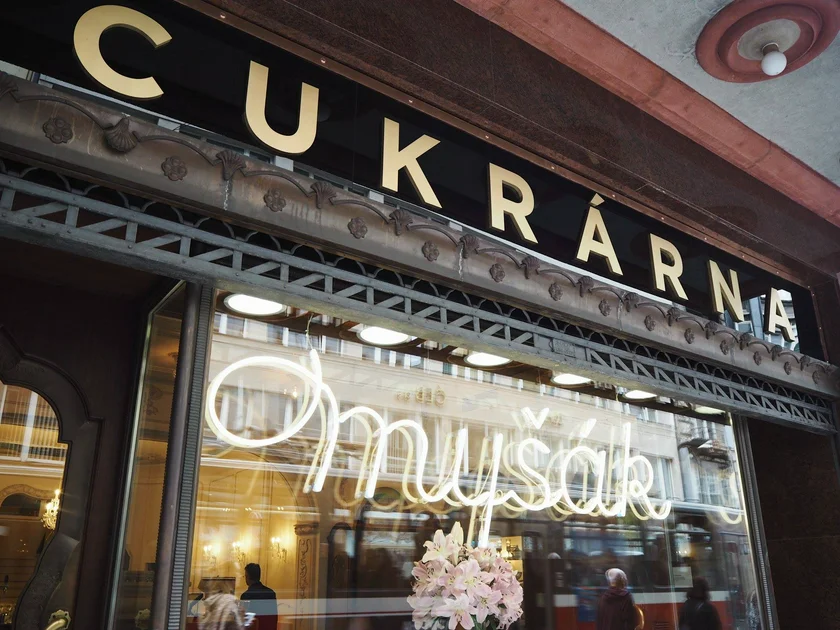
Once you have the ingredients together, you need to sit down and carefully calculate the ratio to get the desired result. The next step is to prepare a base of cream, milk, all kinds of sugar, dry ingredients, and a natural stabilizer. The mixture is left to mature for a day to allow all the ingredients to dissolve. It is then poured into the machine and in about an hour the ice cream can be churned. As it freezes, the volume of a good ice cream increases by about 30 percent; if it is light and weighs almost nothing, it is just sugar that’s been puffed up. The ice cream is then served in our homemade cones.
Was making cones another challenge?
It's indeed quite laborious, but again, thanks to them we can serve the ice cream just the way we like it. The trick is that the dough for the cones contains clarified butter. In it, we macerate cinnamon, vanilla, lemon zest, and some caramel malt from the Dva Kohouti brewery. This results in cones that taste buttery, are pleasantly crunchy and smell subtly of spice.
What kinds of ice cream do you offer at Myšák?
Cream-based ice creams (smetanové zmrzliny) are always available at Myšák, our classics are vanilla and pistachio. The latter is made from the finest quality pistachios, which we recently imported from Sicily. We also brought back Avola Almonds from there, and I'm working on an almond ice cream with apricots. Then there are the seasonal things: our sorbet types depend on what great fruits we can get from Ondra Svoboda in the Holešovice market during the summer.
Like Sicilian pistachios or Sicilian almonds?
That's right. We recently returned from Sicily with Tomáš Karpíšek, his brother Aleš and Bára Karpíšková, who recently opened the bistro Bjukitchen. We went there to find the best quality and tastiest pistachios given that the Sicilian pistachios Verde di Bronte are legendary, they are among the best in the world. Bronte is a town in the northwest of Sicily, pistachio trees grow under Etna on volcanic soil.
The family we stayed with has trees that are over a hundred years old, and they harvest all their crops by hand. The pistachios, and other types of nuts we tasted there, were full of minerals and tasted very intense, as did the wines. In addition to pistachios, we discovered some incredible hazelnuts and almonds in Sicily, and we also brought back lemons and oranges.
So do you consider the hunt for the best pistachios a success?
Absolutely! We used them right away in our ice cream. Pistachio trees only bear fruit once every two years, always in September. This year, they are just about to be harvested, and we plan to bring a supply of pistachios to Vodičkova and use them in other products.
Where do you get your inspiration for coming up with new ice cream varieties?
I base it on specific ingredients and their quality, as well as seasonality. And Sicily has been hugely inspiring! Italians go to the market, buy a super tomato and artisan white bread, and at home they just cut the tomato, drizzle it with good olive oil and serve it just like that, with fresh bread. And it's brilliant because each of the ingredients has such a great, full flavor that nothing more is needed. That's what I have in mind when I come up with ice cream recipes.
How does one know a good ice cream? Any warning signs that ice cream won't be good?
I get vanilla and pistachio everywhere. The classics make it clear whether they know how to make ice cream or not, whether they use quality ingredients, or whether they are cheating. If there is a synthetic ingredient in the ice cream, you will probably still feel it in your stomach after a few hours.
For vanilla ice cream, a distinct yellow color is a warning sign, while for pistachio, a garish green color is usually a sign of artificial coloring. And if somewhere boasts eighty varieties, I'd move on; the ice cream will most likely not be fresh.
What else are you planning?
We're planning cups for the summer so guests can take the ice cream home. If it's good quality, it tastes just like in a confectionary store even at home; just take it out of the freezer five minutes ahead of time, let it stand at room temperature, then scoop it from the edges and return the cup to the freezer tightly sealed. I'd also like to incorporate a little more of what we do in the pastry shop into our ice cream, like different cookies and biscuits. Ice cream with coffee biscuits (esíčky) would really be a delight!
In the Czech Kitchen is a weekly column written in cooperation with the culinary experts from Ambiente. Established in 1995, the Prague-based collective of pubs, restaurants, and fine-dining outlets has transformed the Czech culinary landscape and lent to the widespread awareness of quality food service and production in Czechia. Follow their socials or book your table at www.ambi.cz.












 Reading time: 7 minutes
Reading time: 7 minutes 